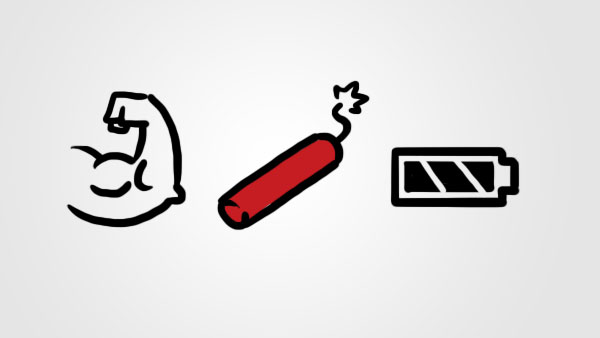We’ve all heard that tiresome (yet true) trope: a picture is worth a thousand words. And we all believe it, right?
Why, then, when it comes to marketing, advertising, animation and associated media, are we so quick to add more images, or more complexity to our visuals? Do you really want to spread your message across a chapter if you can make your point in one page?
Take a step back, think big picture, and let’s discuss why simple graphics (we call them glyphs) should be your gold standard.
Clarity
The less complicated your images, the easier they will be to understand.
Research shows that processing fluency – the ease of processing information visually – is directly related to the simplicity of the image. People who view a webpage, ad, or video and see overly complicated visuals are more likely to have a negative experience and are less likely to engage with the information on the page.
And those who find a website or an ad more aesthetically pleasing are more likely to heed its call to action. We also tend to prefer familiar and relatable images, probably because we understand them more quickly. Universal symbols using simple graphics make it easy on your audience’s brain, and can lend clarity to your message overall.
Context
You may think that adding detail after detail is the most direct path to building an authentic visual experience.
But essentially, the opposite is true.
Detail without context can be confusing and ultimately meaningless. People retain 10% of what they read- add an image, and that percentage soars to 65%. By matching simple graphics to meaningful language, you’re creating a well-rounded, meaningful experience that helps audiences engage more willingly and more deeply, as well as retain more of the information behind both your words and images.
Impact
Here’s something we’ve all experienced- we go to the grocery store, intending to buy something relatively basic – say, a loaf of bread.
Picture yourself in the bread aisle.
From the top of the shelf down to the floor, there are dozens and dozens of different types of bread.
Whole wheat, white, multigrain- sliced or not- all at various price points and quantities.
Maybe you can hone in on something right away; maybe you’re too overwhelmed to choose.
Either way, I’m guessing you don’t recall many (if any) of the options you didn’t pick.
But if the shelf had only 3 or 4 types of bread, not only would you have the time to thoroughly examine each loaf, you’d probably remember every option after leaving the store.
By dedicating your resources to the most impactful images your message reflects, you’re ensuring a better experience for your audience.
Imagination
Simple doesn’t equal boring.
Some of the simplest drawings can also be the most imaginative, both from the artist’s perspective and the audience’s. Theodor Seuss Geisel, better known as legendary children’s author Dr. Seuss, dedicated a lifetime to improving childhood literacy through wacky books chock full of colorful line drawings of the most imaginative characters his brain could concoct, accompanied with minimal words (“Green Eggs and Ham” only used 50 words total).
His were an antidote to the Dick and Jane readers of the same era- however, his colorful sketches were far more engaging than the careful watercolors in those books, likely because they were directly aligned with the words, and leaped off the page, certain to catch a child’s eye.
A well-placed dash of creativity can kickstart the imagination, and make for a more authentic audience experience.
Stock photos are largely ignored, in part because they’re generic by definition.
Next time you’re searching for the perfect stock photo to make your point, keep in mind that likely hundreds of other people have used the same photo to prove similar points. But none of them can sketch an arrow just like you. Try putting your own simple graphics or drawings in the place of a stock photo, to give both you and your audience a jolt of inspiration.

